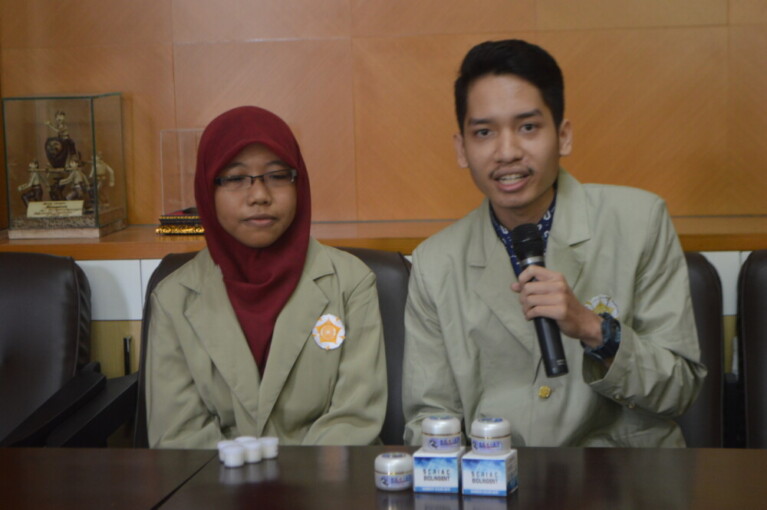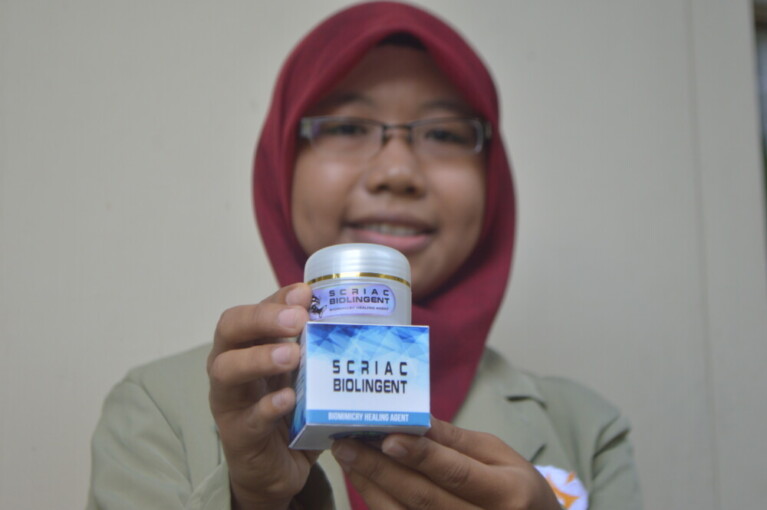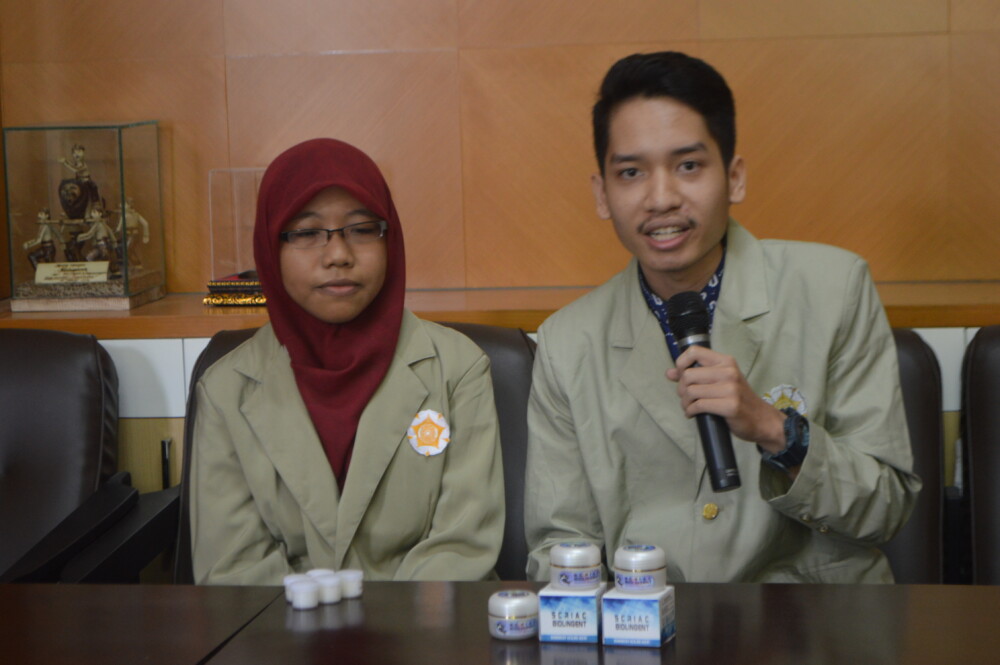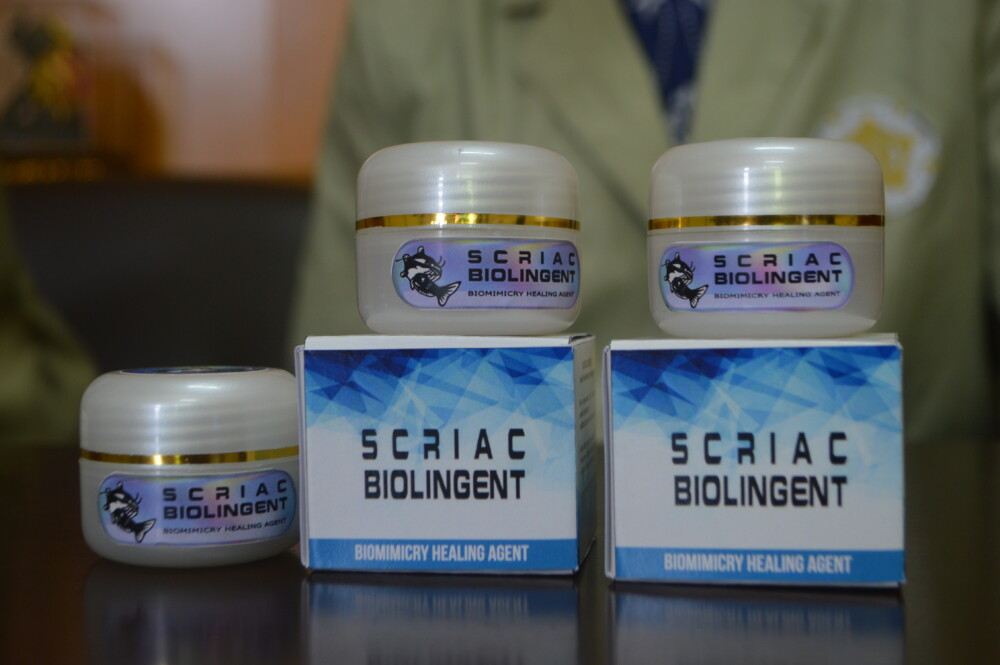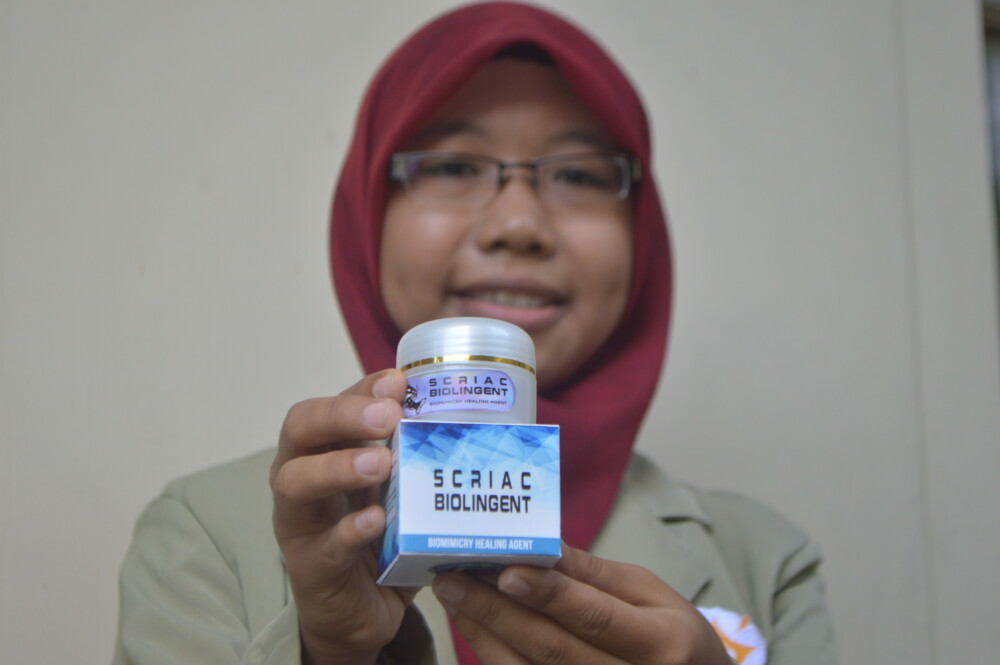Catfish slime can be used as medicine. In the hands of a group of students at Universitas Gadjah Mada (UGM) catfish slime is used as a drug for diabetic wound.
The idea of catfish slime utilization as medicine came from students of the Faculty of Veterinary and Faculty of Pharmacy. They are Joshua Alif Wendy, Dion Adiriesta Dewanda, Megaria Ardiani, Utami Tri Khasanah, and Raden Mas Ravi Hadyan.
Ravi, member of the development team, said slime or mucus of catfish contains active protein compounds in the form of Antimicrobial Peptides (AMPs). These compounds have the potential to be used to heal wounds because it has a strong bactericidal activity to kill pathogenic bacteria.
“Catfish is known as freshwater fish to have complex mechanisms of immunity. Even though it lives in polluted water environment full of pathogenic bacteria, but it rarely becomes infected because of its immunity in the form of mucus on the skin,” he said, Friday (5/8), to the reporters in Fortakgama Room UGM.
Since then, Ravi and his four friends took the initiative to investigate catfish slime for the treatment of chronic diabetic wounds. Especially, for people with diabetes who have been infected with Methicillin Resistant Staphylococus aerus bacteria (MRSA). MRSA is a bacterial pathogen that is resistant to many types of antibiotics and is a major cause of chronic diabetic wound infection.
“We take advantage of the low cost and high availability of catfish slime in Indonesia as an ointment for infected diabetic wounds,” he said.
The process of making an ointment started by taking the slime off the back of the catfish aged 4-6 months and then centrifuged. Next, the mucus obtained is mixed with Poly Ethylene Glycon (PEG). The results of these ingredients produce ointment named Super Clariac Biomimicry healing Agent or referred to as SCRIAC-BIOLINGENT.
Utami added that the ointment is tested on mice and the results are effective for treating diabetic wounds. Initially, the mice induced diabetes type 2. Next, the mice are anesthetized and wounded in the back.
For 15 days, the wound in rats is smeared with ointment every morning and afternoon. The results show catfish slime ointment modification provides better healing effect.
“Rats that were treated by this ointment were cured faster than by using the anti-bacterial ointment on the market,” she explained.
Utami added that this study proves that the catfish slime has anti-bacterial activity against pathogens that are resistant to antibiotics. Therefore, this ointment is potential to treat diabetic wound.
“The ointment of this catfish slime has the potential to be commercialized as a medicine for chronic wounds infected with MRSA,” she said. (UGM / adelily)


